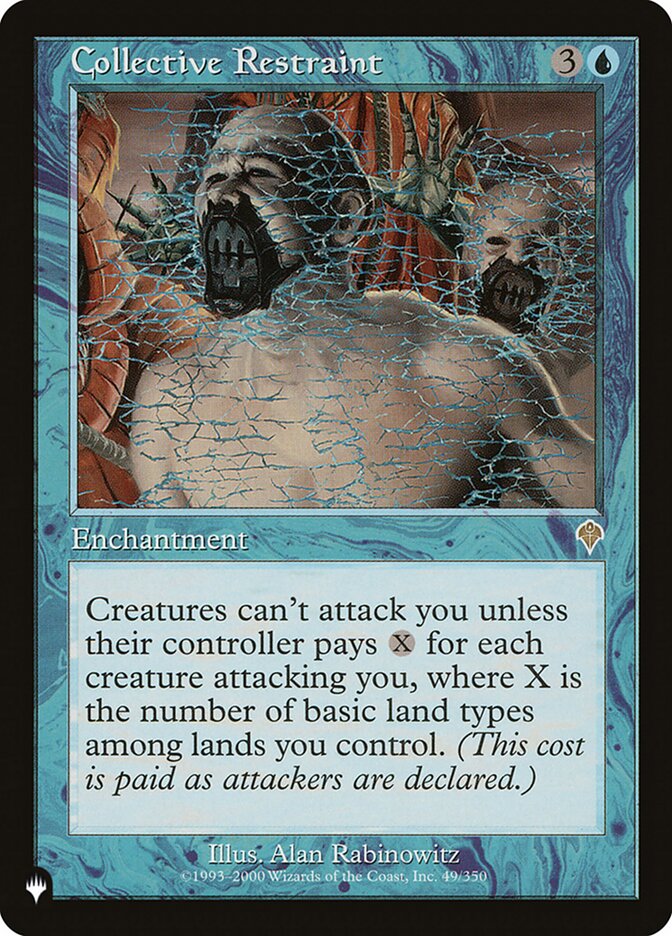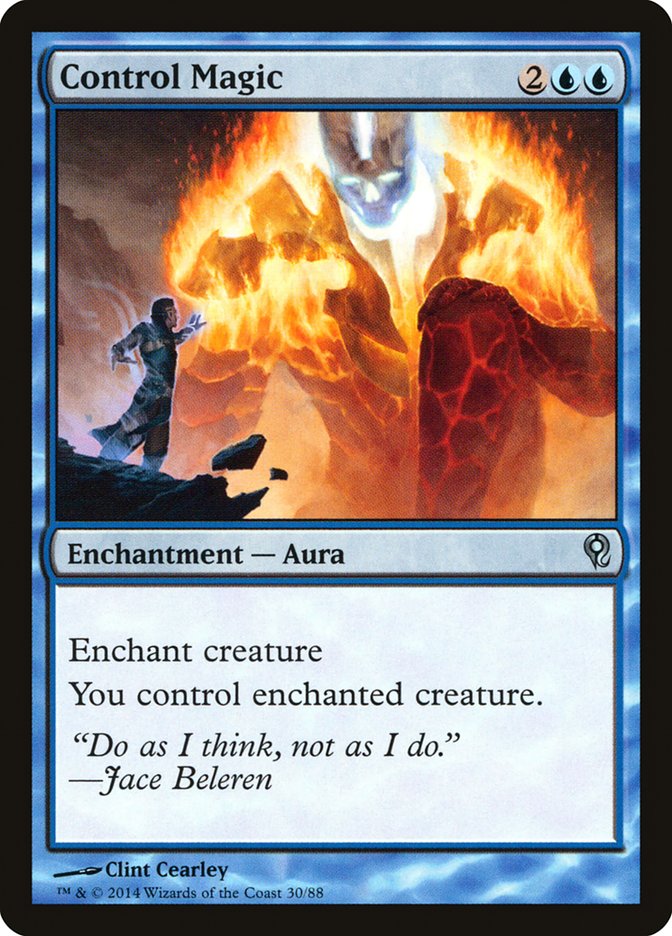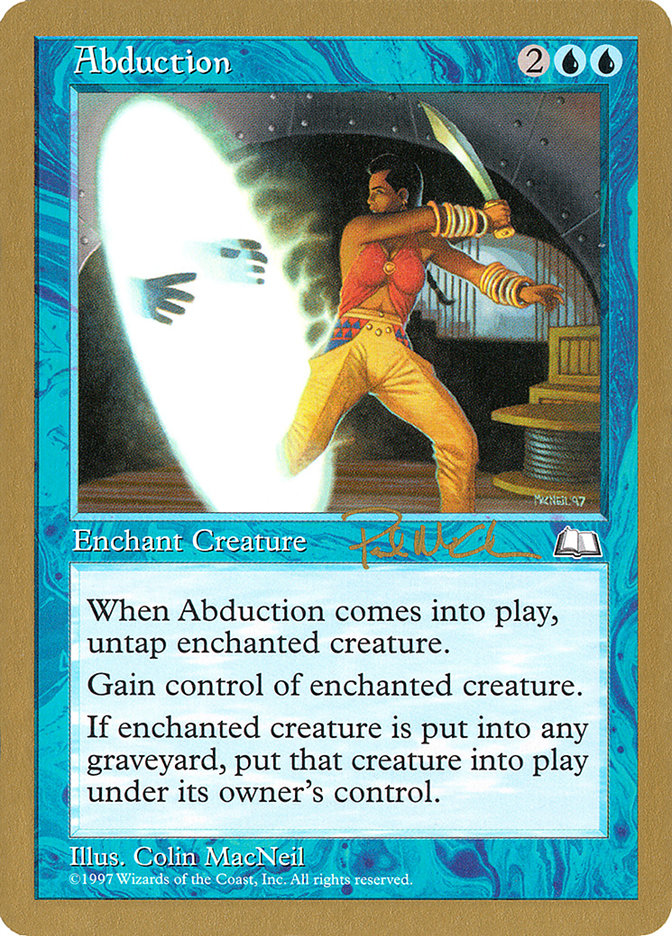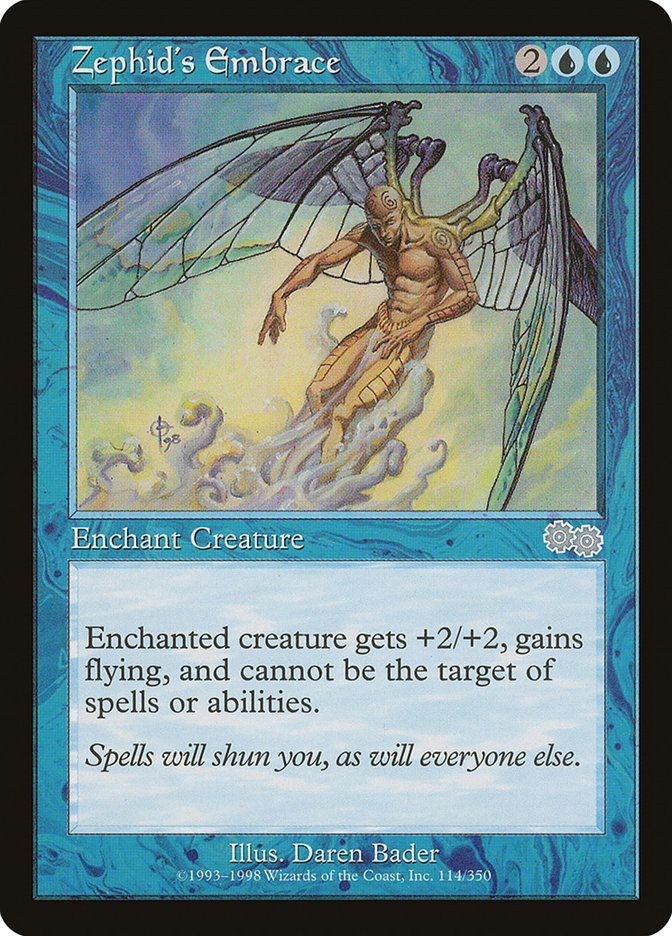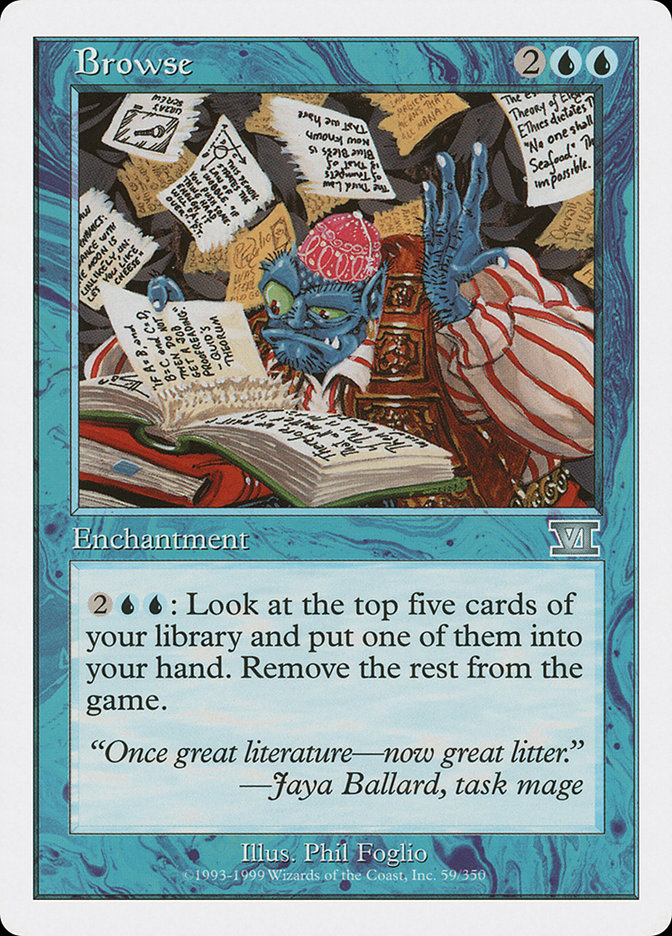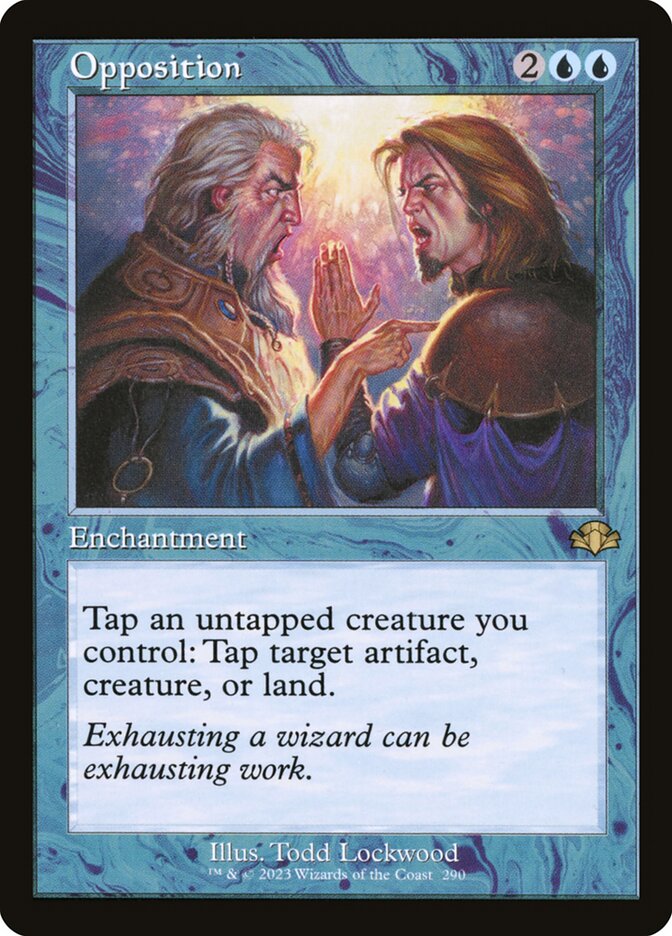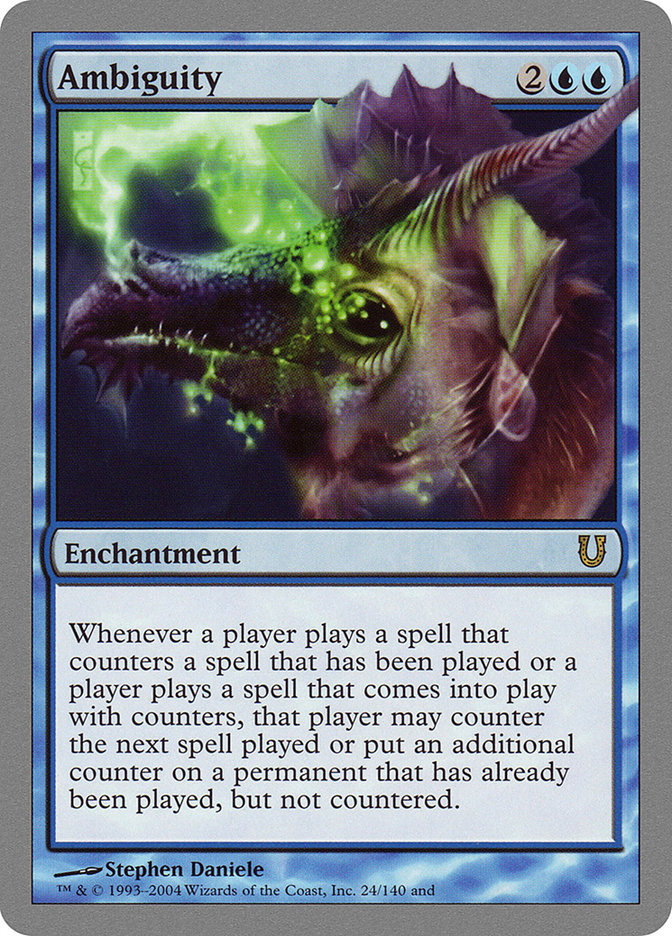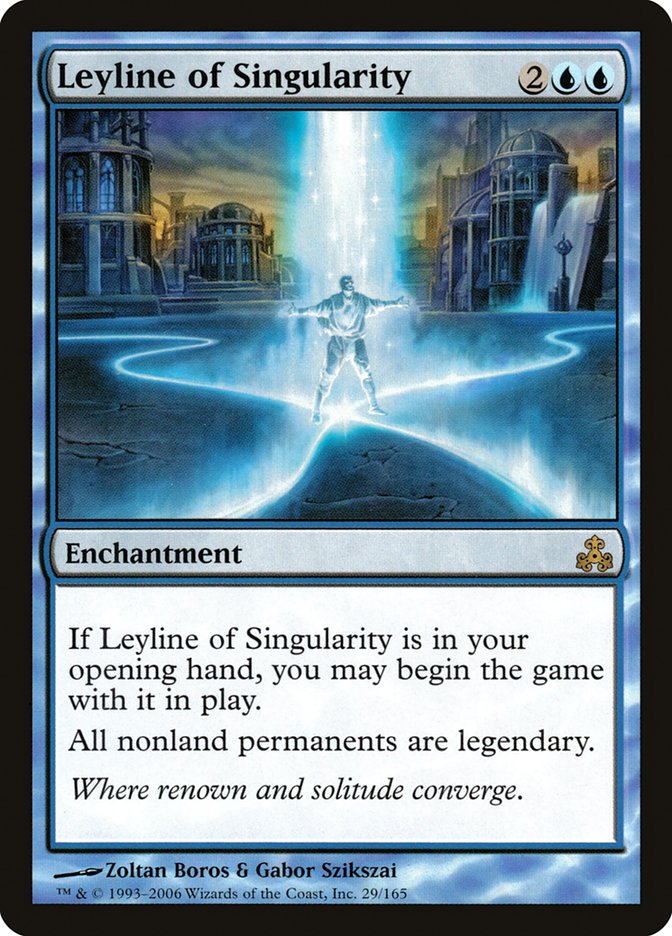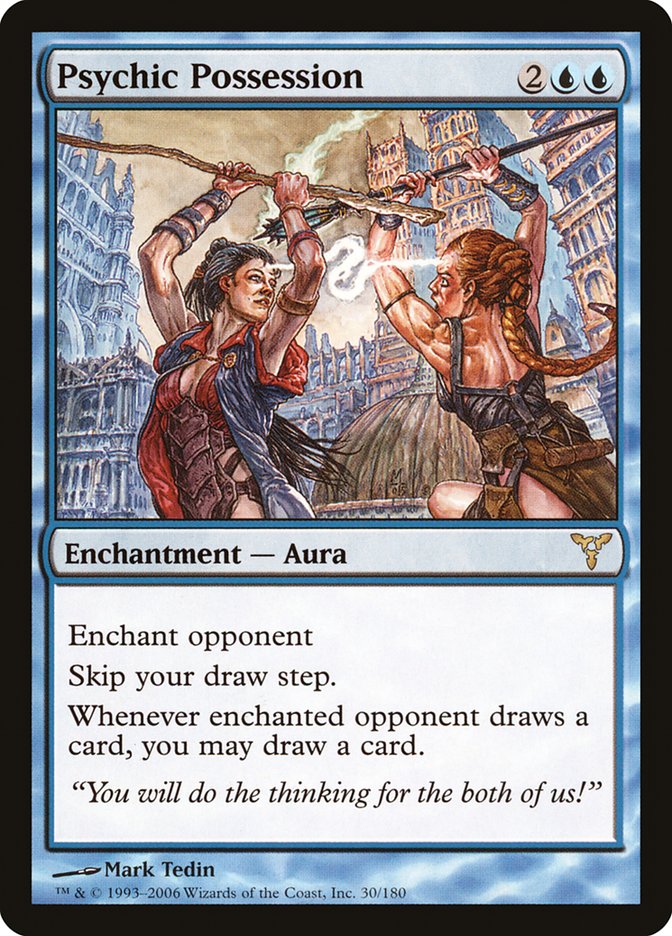Collective Restraint MTG Card
| Card sets | Released in 2 setsSee all |
| Mana cost | |
| Converted mana cost | 4 |
| Rarity | Rare |
| Type | Enchantment |
| Abilities | Domain |
Text of card
Creatures can't attack you unless their controller pays o X for each creature attacking you, where X is the number of basic land types among lands you control. (This cost is paid as attackers are declared.)
Cards like Collective Restraint
Collective Restraint is a unique card that amplifies your defense based on the diversity of your land base in Magic: The Gathering. Its closest relatives include Propaganda and Ghostly Prison, both of which require opponents to pay a fee to attack you. The distinction with Collective Restraint lies in its scaling defense; it’s an effective tool against aggressive strategies, particularly in formats like Commander where varied land types are common.
Reflecting on Sphere of Safety, it also draws from the number of enchantments you control to deter attackers, which can be potent within enchantment-heavy decks. However, it doesn’t offer the immediate impact for multicolored land decks like Collective Restraint does. Lastly, we have Windborn Muse, which mirrors the payment mechanic of Propaganda and Ghostly Prison, yet in creature form. This difference provides an additional blocker but also exposes it to removal that doesn’t affect Collective Restraint.
Despite various options in the defense category, Collective Restraint commands a unique position. Its strength lies in leveraging the diversity of the land base, which can create significant deterrents against opponent attacks. In the realm of defensive enchantments, its nuanced condition for increasing the cost of attacks makes it a noteworthy inclusion in multicolored decks.
Cards similar to Collective Restraint by color, type and mana cost
Decks using this card
MTG decks using Collective Restraint. Dig deeper into the strategy of decks, sideboard cards, list ideas and export to play in ARENA or MOL.
| # | Name | Format | Archetype | Event |
|---|---|---|---|---|
 | Beanstalk Control | Legacy | Beanstalk Control | Legacy League 2024-02-16 |
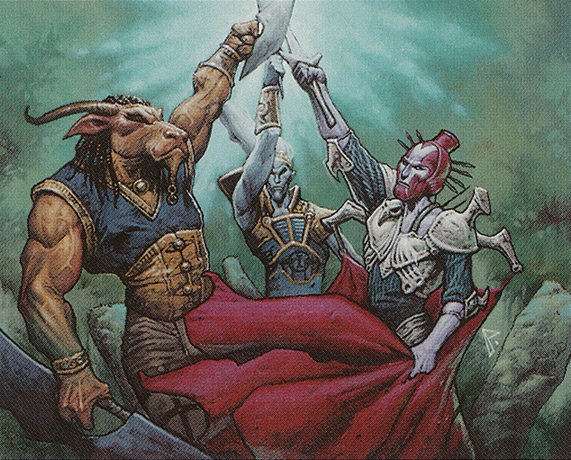 | Decklist | Free form | 80#CS |
Card Pros
Card Advantage: Collective Restraint gives you significant control over the battlefield, effectively causing opponents to think twice before attacking. This shift in game dynamics allows you to maintain a strong defense while building up your own strategies unhindered.
Resource Acceleration: With Collective Restraint, you don’t necessarily accelerate your own resources, but you do throttle the tempo of opponents who would otherwise allocate resources to an aggressive strategy, leaving them to re-strategize and often waste mana or turns.
Instant Speed: While not an instant itself, Collective Restraint promotes a playstyle that benefits from instant-speed interactions. By deterring attacks, you can keep mana open for instant-speed spells and abilities, ensuring that you’re always prepared for opponents’ moves and able to respond on the fly.
Card Cons
Discard Requirement: While Collective Restraint can significantly bolster your defenses, it necessitates a discard from your hand, which can be costly if your hand size is dwindling or if you need to retain key cards for later strategy.
Specific Mana Cost: This card’s mana cost is exclusively blue, which may not smoothly fit into decks that are not heavily weighted towards blue mana sources. Decks with a broader color spectrum may struggle to consistently meet the casting requirement.
Comparatively High Mana Cost: With a casting cost that involves three generic and one blue mana, the setup to optimize Collective Restraint’s domain ability could be seen as steep, especially when other protective options may be less taxing on your mana pool.
Reasons to Include Collective Restraint in Your Collection
Versatility: The power of Collective Restraint lies in its adaptability to various game scenarios. It’s an enchantment that scales up as you diversify your mana base, making it perfect for multicolored decks that focus on controlling the board.
Combo Potential: Deck builders prize Collective Restraint for its synergy with deck themes that emphasize domain or mechanisms that increase the number of basic land types you control. It plays well with strategies that look to penalize opponents for every move they make, slowly choking them out of the game.
Meta-Relevance: In a meta heavy with aggressive creature strategies, Collective Restraint shines by effectively taxing attackers and slowing down your opponent’s tempo. This allows you more time to set up your win conditions and makes it a tactical addition to your defensive arsenal.
How to beat Collective Restraint
Collective Restraint is an intriguing enchantment in MTG that amplifies your defense by making opponents pay mana for each creature they attack with. It’s a strategy often found in decks that revolve around the Domain ability, where the number of basic land types you control increases the cost for your opponent to attack. This card can create a formidable barricade, making it challenging for adversaries to deal damage.
To tackle Collective Restraint, removal spells that specifically target enchantments become essential. Direct enchantment removal like Disenchant or Naturalize can efficiently dispose of this obstacle. Another strategy is to use cards that allow you to bypass the combat phase altogether, such as direct damage spells or abilities that can whittle down an opponent’s life without attacking. Lastly, increasing the number of untapped mana you have available each turn ensures you can still afford to engage in combat despite the restraint imposed. In conclusion, understanding the mechanics and keeping an adaptable deck with enchantment control capabilities is pivotal when facing the defensive stronghold that is Collective Restraint.
BurnMana Recommendations
Collective Restraint stands out as a strategic staple in MTG for its unique ability to fortify defenses in a multi-hued landscape. If bolstering your control over the game appeals to you, this enchantment is a must-have. With its potential to adjust the pace of the battlefield, you strategically position yourself for an upper hand. Delve into our insights and deep-dive analyses where we highlight the essential tactics for incorporation and optimal usage of this compelling card. Elevate your gameplay and join our expert-guided journey to mastering the art of defense in the diverse universe of MTG.
Where to buy
If you're looking to purchase Collective Restraint MTG card by a specific set like Invasion and The List, there are several reliable options to consider. One of the primary sources is your local game store, where you can often find booster packs, individual cards, and preconstructed decks from current and some past sets. They often offer the added benefit of a community where you can trade with other players.
For a broader inventory, particularly of older sets, online marketplaces like TCGPlayer, Card Kingdom and Card Market offer extensive selections and allow you to search for cards from specific sets. Larger e-commerce platforms like eBay and Amazon also have listings from various sellers, which can be a good place to look for sealed product and rare finds.
Additionally, Magic’s official site often has a store locator and retailer lists for finding Wizards of the Coast licensed products. Remember to check for authenticity and the condition of the cards when purchasing, especially from individual sellers on larger marketplaces.
Below is a list of some store websites where you can buy the Collective Restraint and other MTG cards:
 BUY NOW
BUY NOW BurnMana is an official partner of TCGPlayer
- eBay
- Card Kingdom
- Card Market
- Star City Games
- CoolStuffInc
- MTG Mint Card
- Hareruya
- Troll and Toad
- ABU Games
- Card Hoarder Magic Online
- MTGO Traders Magic Online
See MTG Products
Printings
The Collective Restraint Magic the Gathering card was released in 2 different sets between 2000-10-02 and 2000-10-02. Illustrated by Alan Rabinowitz.
Legalities
Magic the Gathering formats where Collective Restraint has restrictions
| Format | Legality |
|---|---|
| Commander | Legal |
| Legacy | Legal |
| Oathbreaker | Legal |
| Premodern | Legal |
| Vintage | Legal |
| Duel | Legal |
| Predh | Legal |
Rules and information
The reference guide for Magic: The Gathering Collective Restraint card rulings provides official rulings, any errata issued, as well as a record of all the functional modifications that have occurred.
| Date | Text |
|---|---|
| 2007-02-01 | In the Two-Headed Giant format, you still only have to pay once per creature. |
| 2014-02-01 | Unless some effect explicitly says otherwise, a creature that can’t attack you can still attack a planeswalker you control. |
| 2021-03-19 | Domain abilities count the number of basic land types among lands you control, not how many lands you control or how many of any type. |
| 2021-03-19 | The basic land types are Plains, Island, Swamp, Mountain, and Forest. Land types other than basic land types (such as Desert) don’t contribute to domain abilities. |

